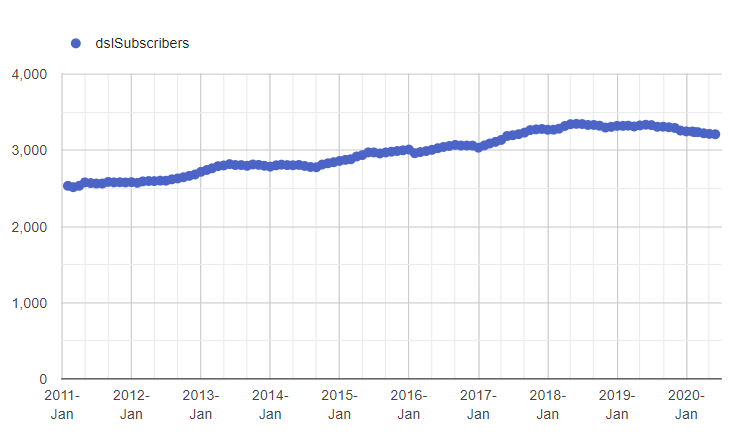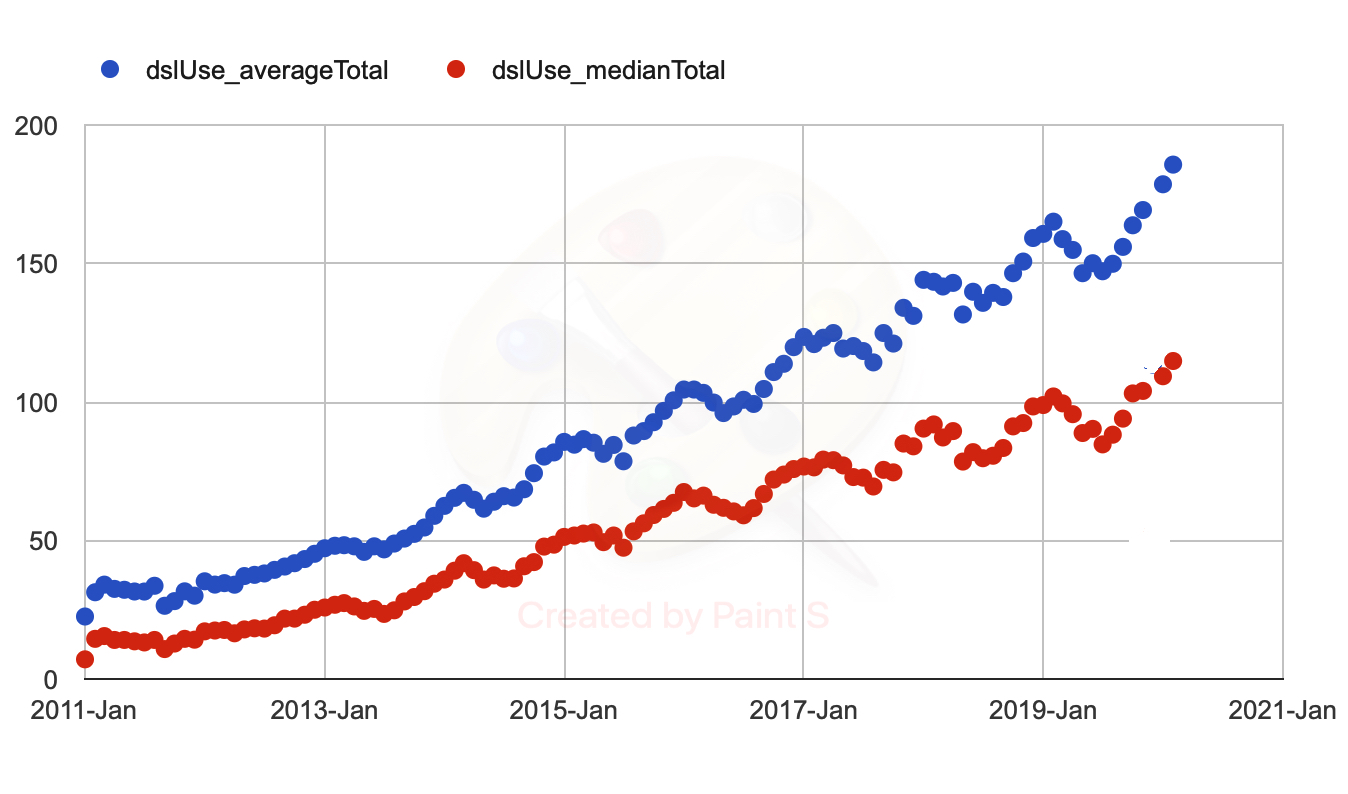
June 2020

For the year of 2019
To: Our members, Partners and Supporters
I am pleased to present our Annual Report for the year ended 31 December 2019.
To begin, on behalf of the Board of Directors I want to extend my appreciation to all our staff and volunteers for their dedication and commitment and once again, delivering another year of excellent performance during a period fraught with uncertainty and unusual challenges. These wonderful people help to ensure that everyone in our region has access to the internet and not only knows how to use it, but feels safe online.
2019 was a pivotal year for us in terms of revenues versus expenses. In August 2019, the CRTC set final wholesale rates that were intended to facilitate greater competition and promote innovative broadband services and affordable prices for consumers. This decision was great for FreeNet members and although we had not increased our prices to members in five years, the decision would have made it possible for us to lower prices even further, making the internet more affordable and available to more people. The Commission also determined that the reduced rates would be applied retroactively.
However, six of Canada's largest internet service providers, including Bell Canada and Rogers, asked the Federal Court of Appeal in September to overrule the August decision by the CRTC and were granted a temporary stay of the CRTC decision. This stay remains ongoing and we are still very much inthe dark about what will happen.
Meanwhile, internet usage has become more and more a part of our lives, from video streaming and conferencing to other online entertainment, telephony and for working from home. As a result, FreeNet’s requirement for bandwidth increased in 2019 by more than 10% and continues to grow.
We also needed to find a way to adapt to an environment that remains volatile and challenging, with an ever-increasing spread between costs and revenue as well as an ongoing need to continue offering services to our members in keeping with our high standards, values and experience.
Our membership, the principal source of NCF revenue, continued at about 5,000 members, including more than 3200 DSL members. We entered the year in a strong financial position, but as you will read in our Treasurer’s report, the ongoing issues about our prices versus our costs meant dipping into our reserve fund.
In 2018 the Board initiated a new Strategic Planning process to develop a comprehensive new Strategic Plan that would provide clarity, direction and measures targeted for success, for the Board, Management and Staff of National Capital FreeNet. Thanks to Allen LeBlanc of Ideation, who facilitated this discussion and process. In 2019, the Strategic Plan was completed and adopted by the Board together with an accompanying Operations Plan and a set of Key Performance Indicators.
The Plan details Strategic Goals and associated Strategic Initiatives aimed to address the envisioned challenges and position the organization towards sustainability and growth over the course of the nextfive years. You can see the plan overview at: ncf.ca/stratplan.
In November of 2019 the Board met offsite, as a Committee of the Whole, to review the current financial situation as well as progress against the new Strategic Plan. Several key members of operating staff were also invited to participate in the discussion. A decision was reached to immediately increase the price of the 10 Mbps service by $3.00 per month and to review an across-the-board increase in prices for all services.
This change took place in Spring 2020 and we are confident it will help NCF stay the course as we await the outcome of the CRTC wholesale pricing decision.
On behalf of the Board of Directors, the staff, the many volunteers and the thousands of people in Ottawa who make up the National Capital FreeNet community, I want to say thank you for your continuing commitment, your generous contributions and most of all, your ongoing participation.
And of course, I am always open to hearing ideas to make the organization even stronger. Please feel free to email me at chair@ncf.ca.
Thank you,
Chris Cope
Chair, NCF Board of Directors

Fellow Members,
From a financial perspective, it has been a challenging year for NCF. For the year ending December 31st, 2019, National Capital FreeNet reports a deficiency of revenue over expenses in the amount of $120,132. The revenue was 1.5% lower in 2019 compared to 2018. We can cite several circumstances that contributed to that result. The main factor again was the fact that NCF has kept its prices the same while covering an increased cost of the DSL services that went from 72.64% of the DSL revenue in 2018 to around 80.02% of the DSL revenue in 2019. Also, total grants fell 33.7% from $103,576.40 in 2018 to $68,676.76 in 2019.
The adverse effect in revenue was accentuated by an increase of 5.1% of the administrative expenses that went from $572,031 in 2018 to $601,386 in 2019. The growth was mainly driven by increases in professional development (1028%), insurance (5.8%), office phone (33.4%), Auto-Debit fees (15.6%) and Moneris service fees (8.9%).
Amortization of capital assets decreased 13.1% to $35,682 in 2019 from $41,059 in 2018. That decrease was due to the change in the depreciation method of the network equipment undertaken in 2019. The new method for calculating the amortization of the network equipment is the diminishing balance methodology.
The dismissing balance method is a good depreciation method for assets that quickly lose their value or become obsolete, like network equipment. According to the methodology, depreciation is charged at a fixed percentage (40% in our case) of the book value of the network equipment. As the book value reduces every year, thus the amount of depreciation, that is the reason why the methodology is also known as the reducing balance methodology. This methodology is based on the assumption thatthe reduction to the value of the assets is larger in the early years than in the later years, hence more amount of depreciation should be charged in the earlier years.
Due to the previously enumerated factors, the net cash provided by the operating activities for 2019 was -$44,561. The net cash used in investing activities was $46,804, mainly investments undertaken to update the badly needed front-office software and the back-office software of the operation. Therefore, the free cashflow generated by NCF in 2019 was -$91,365.
The net assets fell 34.4% in 2019. Out of the $229,185 in net assets, 67.19% ($153,993) are unrestricted assets, and 32.8% ($75,192) are invested in capital assets. Out of the total assets of $394,203, 67.7% are cash and cash equivalent (term deposit), while accounts receivable account for10.5% or $41,345. A big proportion of accounts receivables (36.0%) is a Bell credit receivable for DSL services in the amount of $14,891.
We want to note that if we cannot continue to receive income due to some unforeseen event, the cash levels shown as of December 31st would allow us to pay for 4.40 months of fixed expenses not related to revenue. If we include accounts receivables in the mix, we would be able to cover 6.35 months of expenses without receiving any revenue.
The primary tangible liability is the accounts payable to Bell for DSL services in the amount of $65,984,and government remittances for $15,581. NCF's current ratio is 1.94, which means NCF would be ableto pay almost twice its current liabilities with its current assets.
In 2020 National Capital FreeNet will face many challenges, including balancing pricing with the demands of member's use of bandwidth and DSL increased costs, increasing membership in DSL, and managing the infrastructure and operations to support all the changes while keeping this important social enterprise sustainable.
Also, even though NCF received a clean opinion from our auditors, and that most of last year's auditor's suggestions were implemented, there are several suggestions and recommendations that will further enhance controls and oversight by the board that needs capital investment and finalization of the changes in our management software to be implemented fully.
While we wait for the final resolution of the Bell appeal challenging the CRTC resolution to reduce access and broadband prices retroactively to 2016, we as a board took the hard decision to increase our rates in 2020 to stop the net transfer of value from us to our service providers. We are hopeful that the decision will favour the CRTC's latest price structure and that the Federal Court of Appeal decision will award us the credit for what the CRTC deemed as overpayment since 2016.
As Treasurer, I would like to again recognize the dedication of the volunteers, employees and members for their time and effort to bring safe and affordable internet services to the National Capital Region. I would also like to let them know how outstanding their contributions have been in making NCF aviable organization that has been able to survive and adapt and grow in the face of never-ending challenges and changes for more than twenty-five years.
Best Regards,

Sterling Jimenez, PhD
Economic & Financial Risks
Treasurer, NCF Board of Directors

This report is about what NCF did in 2019, and how that work relates to our organizational past and future. Looking back, 2019 was about taking stock of the tough position we found ourselves in on multiple fronts, making some hard but necessary internal changes, and laying the groundwork to adapt and pivot more quickly moving forward.
There are lots of metaphors for this kind of work: I am partial to the one about how ducks look calm on the surface but are paddling very hard underneath the surface of the water.
And though 2019 was before everything changed in terms of COVID-19, we did benefit from some of that work when the lockdown hit earlier this year and we had a huge jump in internet usage and transitioned most of our office to remote work.
Membership:
We started 2019 with more than 5000 members. As a not-for-profit social enterprise this includes those who are paid subscribers to our high-speed DSL internet as well as those who only use our email, basic web-hosting and dial-up services, and those who are members because they want to participate in the governance of NCF and support our digital access work, including community workshops. Thanks to all of you!
In terms of our subscription services, we started the year with 3321 DSL members and ended with 3259 DSL members. This is a loss of 62 members but we actually had more than 400 new members and lost almost 500 existing members. This rate of churn has been pretty similar over the years, although obviously we are working to retain more existing members while also encouraging new members to join. We are hopeful that the new front-end website will help with this, and spent most of 2019 working on it.
These DSL members also include the almost 300 DSL members through our Community Access Fund (CAF) plan available to Ottawa Community Housing tenants, which grew by more than 30 members over 2019. We want to be able to extend the eligibility for the CAF plan to other organizations and members who are living on low incomes and are hopeful about our ability to implement this in 2020.
Here’s the trend of DSL member growth since 2011:

Network and Operations:
This is definitely one of those calm duck/busy duck categories and is driven by two factors.
The first is growing internet usage by our members, as shown in this chart. We offered unlimited usage starting in 2017 and are pleased our members are using the internet without fear of overage charges. This freedom is then combined with the growth in online video and gaming stream quality and the explosion of connected devices.

To accommodate this growth we have been building on the network changes we started in 2017 with the purchase of two 10G routers.
This leads to the second driver of our network work: we used the purchase of the routers as the jumping off point in developing a Business Continuity and Network Resilience Plan to ensure we can continue to offer a high quality service, as well as an affordable one.
In 2019 this included: making changes to our network by adding more capacity and working with multiple suppliers when possible, changing our circuit distribution to enable better resilience in case of a supplier outage, and upgrading our servers and moving to a virtual server configuration. This also included a Zimbra email upgrade. We were particularly thrilled to be able to make these changes with limited member-affecting outages.
We did have a few partial service outages last year due to external factors. For those of you who were affected: thank you for your patience as we worked with our suppliers to get them resolved.
We also applied for and received another block of IPv4 addresses from the American Registry of Internet Numbers (ARIN) which makes it easier for us to make supplier-neutral decisions about our network now and in the future. We also use our previously ARIN-assigned IPv6 addresses on our network but haven’t yet deployed them for member use.
In terms of other operational changes, we started using Django as an application server on our back-end. This enabled us to update a number of tools related to service provision, billing, hardware and internal reporting tools. These were necessary changes to be able to offer a number of new services including the new website, cable internet, rental modems and VOIP.
As such, we started investigating our cable internet options, both from a business and technical perspective. We will continue this work throughout 2020 and expect to launch cable internet in January 2021.
We also changed our office phone system, which improved our voicemail capabilities and has made it easier to route office calls to the cell phones of staff working remotely. And we updated our pre-authorized debit processing with Scotiabank.
Community outreach and advocacy:
This is the NCF difference — working to provide high quality and affordable internet, but doing so as a community-based and member-driven not-for-profit that works towards universal digital access.
In 2019 this included the Board and staff finishing up our Strategic Plan for the next five years, with a mix of goals about how we can improve our financial sustainability while growing the membership and strengthening our services, and increasing our advocacy and digital education work.
The Strategic Plan also stated more plainly NCF’s vision: that everyone in our region is able to fully access the Internet and related technologies, meaning they can afford high quality connectivity, understand how to use it, and feel safe online.
We are currently reviewing the related key performance indicators and workplan and developing a more detailed advocacy strategy, including increased member engagement.
As mentioned above, we also worked on the new front-end website throughout 2019 – both as a technical project and as way to improve its use as a digital literacy and public education resource and platform for advocacy.
One of our Management Team members participated in an Internet Society program related to Building Community Networks which tied into ongoing work we’re doing to explore community mesh networks. We also participated in an intense business accelerator program for social enterprises run by the Centre for Social Enterprise Development (CSED).
The Board used the Diversity in Leadership Ottawa program offered by Volunteer Ottawa for a second year. It offers the opportunity to recruit diverse candidates to the Board and increase our representation of the communities we serve, as well as training on equity issues.
And around this time last year, we finished up the Saved with a Click program funded by the City of Ottawa with a panel discussion on the trade-offs between “free” online services and privacy. It was offered in partnership with the Ottawa Public Library and featured an amazing line-up of privacy experts: we look forward to more of this kind of work in the future.
Finances and pricing:
The details of NCF finance are contained in the audited financial statements and the report by our Treasurer, Sterling Jimenez.
The short version is: because of our commitment to affordability, we tried to keep our prices the same as they had been when we last dropped them in 2017, despite rising usage and other supplier costs, and a significant drop in revenues that offset our expenses, including Bell incentives, grants and donations.
Because of similar financial issues in 2018 we restructured staff to run leaner without sacrificing service excellence, but the financial impact of those changes won’t really be felt until 2020.
Our decision to hold tight on pricing was borne out in August when the CRTC dropped the wholesale rates we pay Bell, retroactive to 2016. Unfortunately, as you know, Bell and the other incumbents appealed this decision to the Federal Court of Appeal a month later, freezing the rates at the old, higher prices. We continue to pay those old, higher rates.
As such, we increased the price on the 10Mbps plans in November 2019 and laid the groundwork for further price increases in Spring 2020.
We ended 2019 with a significant loss of $120,132 and facing an uncertain regulatory future. NCF has been careful over the years about maintaining a significant surplus, but we cannot continue on this path and so have made further changes in 2020 to get closer to break-even.
Staff and volunteers:
In addition to the staff re-structuring mentioned above, there were a number of other HR changes in 2019.
These included hiring new HelpDesk Analysts like Younes El Bakri, and four summer students, supported by the Canada Summer Jobs program. And former HelpDesk Analyst Dylan Ferris took on the role of making system changes to support the new front-end website.
We also offered professional development to a staff member with funding from the Canada-Ontario Job Grant program. Thanks to Pinecrest-Queensway Employment Service Centre for facilitating this program: it’s our third time using it and we look forward to other staff being able to access it in the future!
Near the end of 2019, thanks to funding from the Department of Canadian Heritage’s Official Language Support Program, we were also able to hire Karine Habboub as our Bilingual Volunteer and Outreach Coordinator. Karine is working to formalize our volunteer program and help make the organization more bilingual, including the development of a bilingual online Learning Management System which also works well in our current remote-working context.
We also consider the member beta-testing group as volunteers: thanks for your help! If you’re interested in joining for future testing, please email beta@ncf.ca.
Thanks to all NCF staff and volunteers for your work in 2019!
Donations, grants and other fundraising:
Thanks to all the members whose donations help support NCF. At the end of 2019 we also kicked off a funding drive to help cover some of the costs of our server upgrade and a number of you donated more than you already do: it makes a huge difference! Our total donations in 2019 were $56,623.42.
We continued to apply for grants and employment subsidies through 2019, including another New Horizons for Seniors Program grant to continue the work we started with our “WiseNet” program for seniors. We received this funding in early 2020 and are working now to launch it in the Fall.
We also continued to work on grants from 2018. This included the “Saved with a Click” program funded by the City of Ottawa Community Economic Development Program, the grant and loan combo we accessed through the Centre for Social Enterprise in Development (CSED) Uncapped program, and the Department of Canadian Heritage’s Official Language Support Program.
Together grants and subsidies brought in $59,778.01 in 2019.
Thanks to all our funders, these projects have been the backbone of much of our recent digital access work.
Conclusion and next steps:
As I said at the beginning, 2019 was a busy year for NCF as we wrangled with internal and external changes. They were necessary but not always easy.
That said, we look forward to what those changes have made possible for 2020 and beyond.
And we want your help as we move forward. If you have any questions, concerns or suggestions for NCF please feel free to get in touch at shelley@ncf.ca.
I will also note that, because of COVID-19, we’re not able to offer an in-person AGM Meet and Greet this year but are planning a virtual member town hall for late September (just around the time of NCF’s birthday on September 29th: we turn 28 this year!) We will be in touch with more details.
Thank you again for your ongoing support as NCF navigates our role in making technology more accessible.
Shelley Robinson,
NCF Executive Director